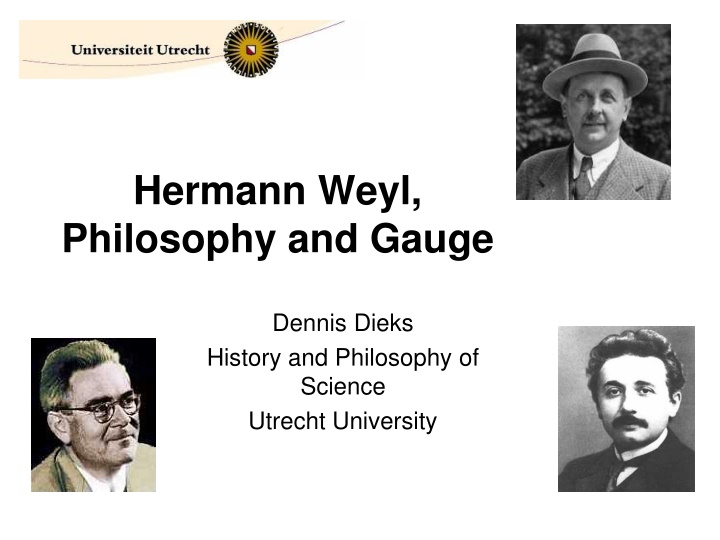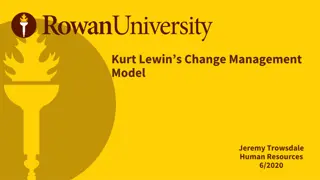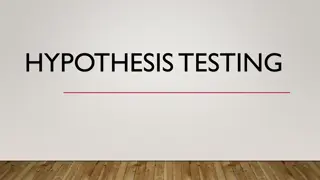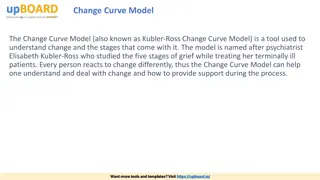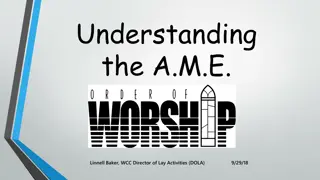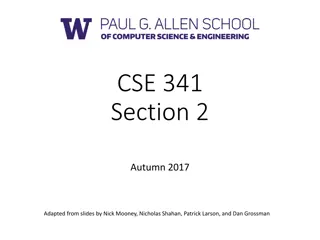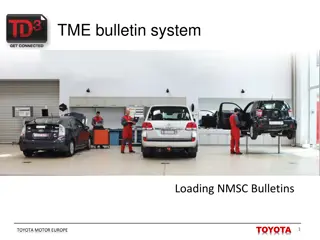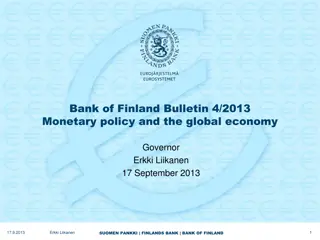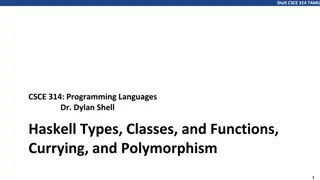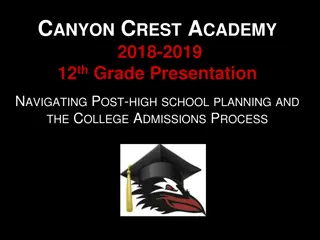Type Change Bulletin and Service Details
This bulletin outlines a type change for various SKUs including DCCS670 and DCM575, involving a transition to PM gear, a switch in gearbox material, and other modifications. It provides specifics on affected components, parts interchangeability, and unique parts recommendations. Implementation is set for June 2nd, 2021. Images and details included.
Download Presentation

Please find below an Image/Link to download the presentation.
The content on the website is provided AS IS for your information and personal use only. It may not be sold, licensed, or shared on other websites without obtaining consent from the author.If you encounter any issues during the download, it is possible that the publisher has removed the file from their server.
You are allowed to download the files provided on this website for personal or commercial use, subject to the condition that they are used lawfully. All files are the property of their respective owners.
The content on the website is provided AS IS for your information and personal use only. It may not be sold, licensed, or shared on other websites without obtaining consent from the author.
E N D
Presentation Transcript
Hermann Weyl, Philosophy and Gauge Dennis Dieks History and Philosophy of Science Utrecht University
Philosophical Background of Early 20th Century Physics Weyl, Reichenbach, Schlick, and many others, were brought up in a Kantian philosophical tradition As the original Kantian notion of a synthetic a priori was made problematic, a more flexible form was proposed, in which the a priori was relativized Reichenbach (and others) soon exchanged this for an empiricist position But Weyl remained firmly within a Kant-like tradition, and this was significant not only for the motivation, but also for part of the content of his gauge ideas
A (slightly) different view The differences between Weyl s approach (phenomenological analysis as starting point of all science) and empiricists like Reichenbach are not as significant for their physics as it may seem Weyl s gauge theory is best seen as linked to empirical, physical and mathematical arguments---rather than as based on his philosophy
Reichenbach 1. Reichenbach (Relativity Theory and A Priori Knowledge,1920): Science is right in using conceptual schemes that are in conflict with Kant s a priority claims (e.g., non-uniqueness of time order, non-Euclidean geometry) 2. Still, there is a sense in which Kant was right: we must possess concepts before we can even start to do science 3. Solution: instead of Kant s unrestrictedly valid principles, science structures experience with principles that evolve relative a priori
Rostock, 25. 9. 1920 Sehr geehrter Herr Kollege, Ihr Buch uber Relativitatstheorie und Erkenntnis a priori habe ich erhalten und ich danke Ihnen herzlich f r die Zusendung Ich freue mich nat rlich, dass wir in sehr wesentlichen Punkten bereinstimmen, und ich glaube sogar, dass die Ubereinstimmung erstens schon jetzt etwas gr sser ist, als sie Ihnen erscheinen mag, und dass sie zweitens Aussicht hat, sich durch kleine Zugest ndnisse noch mehr zu vergr ssern. Schlick to Reichenbach (1): . It gives me pleasure, of course, that we agree on very essential points and I even believe 1. that our agreement is a bit more substantial than you may think and 2. has the chance of becoming even greater if you make some small concessions. Schlick to Reichenbach (2): The central point of my letter is that I cannot find out what really is the difference between your a priori principles and conventions, so that we might agree on the essential issue. What has amazed me most in your manuscript is that you dispose of Poincar sconventionality doctrine in so few words. Rostock, 26. 11. 1920 Sehr geehrter Herr Kollege, es ist der Kernpunkt meines Briefes, dass ich nicht herauszufinden vermag, worin sich Ihre S tze a priori von den Konventionen eigentlich unterscheiden so dass wir also im wichtigsten Punkte einer Meinung w ren. Dass Sie ber die Poincaresche Konventionslehre mit so wenigen Worten hinweggehen, hat mich an Ihrer Schrift am meisten gewundert.
Reichenbach as an Empiricist Reichenbach from now on emphasizes that physical concepts link directly to measurable quantities (via coordinative definitions ). Sometimes empirical results do not completely fix a concept. Then we have to make an arbitrary choice. Example: simultaneity in SR is constrained by the empirical fact that the round-trip speed of light is a universal constant, and conventional otherwise.
Definition of simultaneity. Clocks A and B are synchronous if: t2 = t1 + (t3-t1) t3 with an arbitrary value between 0 and 1. t2 t1 A B The justification for the arbitrariness of is the physical fact that measurements are local
Simultaneity as gauge Standard time ? Alternative time after non-standard synchronization: ? = ? + (x) Alternative light velocity along unit vector ?: ? ? ?= 1+??.?? ? Roundtrip time: ? =? ?+ ?.?? with ? = ??, ? ? = 0
Simultaneity as Gauge That ? ? = 0 is an absolute global relation (roundtrip speed of light always c), invites a mathematical/physical speculative possibility: if ? ? 0, then light traversing the same closed curve in opposite directions would need different amounts of time: ? = 2 ?.? ?. If ?( ?) =? ? ?2 this gives the Sagnac effect.
Simultaneity as Gauge Sagnac: rotation ? with respect to an inertial frame shows itself in a difference in roundtrip times. A dynamical equation for ?( ?), relating it to sources (masses/energy) would inform us about the orientation of local inertial frames and thus lead into the direction of a theory of gravity. So: The empirically motivated local freedom of simultaneity leads to a new physical theory by postulating a dynamical instead of a rigid ? field
Weyl Space, Time, Matter: an example of how philosophy, mathematics and physics permeate each other, a topic that is dear to my heart. Space and time are our intuitive ways of representation (Anschauungsformen) All knowledge of reality starts with what is given in consciousness Pure Consciousness is the seat of the a priori Analysis of our intuition is able to reveal essential properties of space and time
Weyls gauge theory (1918) Pure intuition is essentially local. It only makes sense to intuitively compare quantities at infinitesimally close points. The same intuitive certainty that characterizes the relativity of motion accompanies the principle of the relativity of magnitude The gauge principle
If ? is a distance at P, and ? + ?? the measure of this distance when congruently displaced to the infinitesimally near point P', we have ?? = ??? with ?? = ?????. When a different, place-dependent, unit is chosen we have ? = ??, ? ? = ?? ?, with ? ? = ?? Infinitesimally, a calibration (gauge) can be chosen so that ? remains constant under displacement, but the formulas allow path- dependence of length globally. ?? ?
transport along a parallelogram: l l = with = dl l d l l = = Fjk dxj xk xi Fjk = j/ xk - k/ xj l l dxi In Riemannian space we are used to the fixed global relation ? = 0. But the formalism suggests the speculation ? 0, and the physical interpretation of i as electromagnetic potentials.
Weyl / Reichenbach Striking similarity between Weyl s idea of gauge freedom and Reichenbach s conventionality of simultaneity: 1. Invariance of physical results under local changes of unit 2. This in itself does not lead to any new physics 3. New physics results from replacing a global rigid constraint by a dynamic variable
The essential intuitive properties of local spacetime regions do not play a role here! Weyl (partly) admitted this physical irrelevance of intuitive space: To Einstein s comment that the path- dependence of intervals conflicts with experimental results (e.g., the robustness of spectral frequencies), Weyl replied that there is no self-evident relation between his transported spacetime interval and physical processes.
The same message may be gleaned from Weyl sanalysis of the problem of space . As a result of Wesensanalyse (Husserl), Weyl finds that infinitesimal regions must all be qualitatively the same, carrying an (infinitesimally defined) Pythagorean metric. (Raum, Zeit, Materie, chapter II). But as he states, this result pertains to space and time as our Anschaungsformen , so that it remains unclear what the metric and the homogeneity mean for the behavior of matter.
Recent signs that spacetime is losing its fundamentality in physics Quantum mechanics: matter, fields are not to be represented by (local) functions on spacetime. What happens in a region cannot be explained by matter (fields) inside this region: Bell inequalities and its variations. Quantum gravity: spacetime appears to be emergent, as a statistical surface phenomenon of a deeper reality
Weyls new gauge theory (1929) the electromagnetic potentials have an invariance property that formally (in formaler Hinsicht) resembles that of my old gauge theory: . ei (x) ; j(x) j(x) - (x)/ xj Therefore it seems to me that this new gauge principle, which stems not from speculation but from experience, compellingly shows that the electric field is a necessary consequence not of gravity but of matter, represented by . Es scheint mir darum dieses nicht aus der Spekulation, sondern aus der Erfahrung stammende neue Prinzip der Eichinvarianz zwingend darauf hinzuweisen, da das elektrische Feld ein notwendiges Begleitph nomen nicht des Gravitationsfeldes, sondern des materiellen, durch dargestellten Wellenfeldes ist.
Conclusion In his The Philosophy of Space and Time ( 8), Reichenbach argues that even if it were correct that an intuitive a priori singles out a unique geometry, this would be irrelevant for physics, because physics is about relations between physical things and processes and not about their intuitive representation by us. Weyl s work on physical geometry and gauge confirms this.
